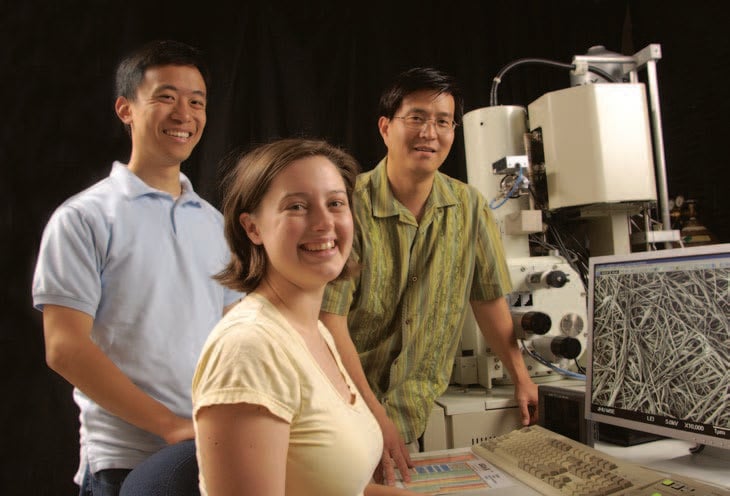
Ben Tang and Caroline McEnnis are on a mission to let young people know that lack of a sight is not an obstacle to a career in science. The Hopkins engineering graduate students, under the direction of Materials Science and Engineering assistant professor Michael Yu, have organized a four-day event designed to engage blind high school students in learning about engineering, science, and technology.
The Blind Youth Slam, which will unfold July 31 to August 4 on Hopkins’ Homewood campus, involves 200 blind and low-vision high school students from across the country. The students will be matched with 70 adult mentors from the blind community from a variety of professional backgrounds, as well as students and faculty from the Whiting School, and will participate in a wide range of science and engineering experiments. The projects range from the biological—dissecting a dogfish shark and learning about the circulatory system— to engineering and technology topics, like launching rockets and building windmills.
“You have to think very creatively to convey these very complex ideas in a form that high school students can understand, as well as translate them so they can be performed using non-visual techniques,” says Tang, who’s currently working toward his PhD in chemical engineering. In the months leading up to the Slam, he and McEnnis held workshops to help sighted people working on the project adapt their ideas for the blind.
“One experiment we’ll perform,” says Yu, who will be presenting lectures on the role of collagen in the human body, “is turning a powder collagen into a gel-like structure, sort of like Jello.” To assist them, the students will have specially designed equipment that can read and speak to them. “For the final project, students will make a 3-D picture, called a ‘swell form,’ out of an image. This picture is a format the students can actually feel and ‘see,’” Yu explains.
But the fundamental mission of the project, which is being funded by the National Federation of the Blind, is simply getting blind students interested in science and technology, when typically these doors have been closed to them.“The students may have been limited by their teachers, by their parents saying ‘you can’t do this because you can’t see,’” says McEnnis, a PhD candidate in the Materials Science and Engineering department. “People’s knee-jerk reaction is to say, ‘No, that’s not safe,’ but it’s not true. There are ways for blind people to work in science and engineering.”
Braille display computer screens and textto- speech programs allow blind users to use graphing software, read journal articles, surf the Internet—basically anything a sighted person can do on a computer, she notes. Sometimes, though, blind scientists have to improvise. John Miller, a blind electrical engineer at Rockwell Semiconductor Systems and one of the mentors for the Slam, constructs his own type of poster board that records the impressions made by pens so he can feel graphs and diagrams drawn on it.
“People’s knee-jerk reaction is to say, ‘No, that’s not safe,’ but it’s not true. There are ways for blind people to work in science and engineering.” — Caroline McEnnis
McEnnis notes there are many blind professionals like Miller who are making daily contributions to science. Google and NASA are just two examples of high tech organizations that successfully employ blind professionals. “There definitely is a population out there,” she says.
Another goal for the Slam is a social one—giving young blind people a chance to interact with each other. They will stay at the Homewood campus and will be assigned professional aides who can assist them. “A lot of blind students don’t have access to other blind students their age, let alone blind adults who can serve as mentors,” McEnnis says. And, she adds, for many, it will be the first time they’ve been away from home.
Tang and McEnnis hope the Slam will become an annual event. The two also plan on developing curricula to go along with the project that will find its way into high schools where blind students are taught. “Their access to the world is through their hands for the most part,” says McEnnis. The message she hopes they’ll take home? “Get out there and touch the bridge and touch the chair. Experience the world in the way that you can.”
To find out more about the Blind Youth Slam, go to www.blindscience.org.




